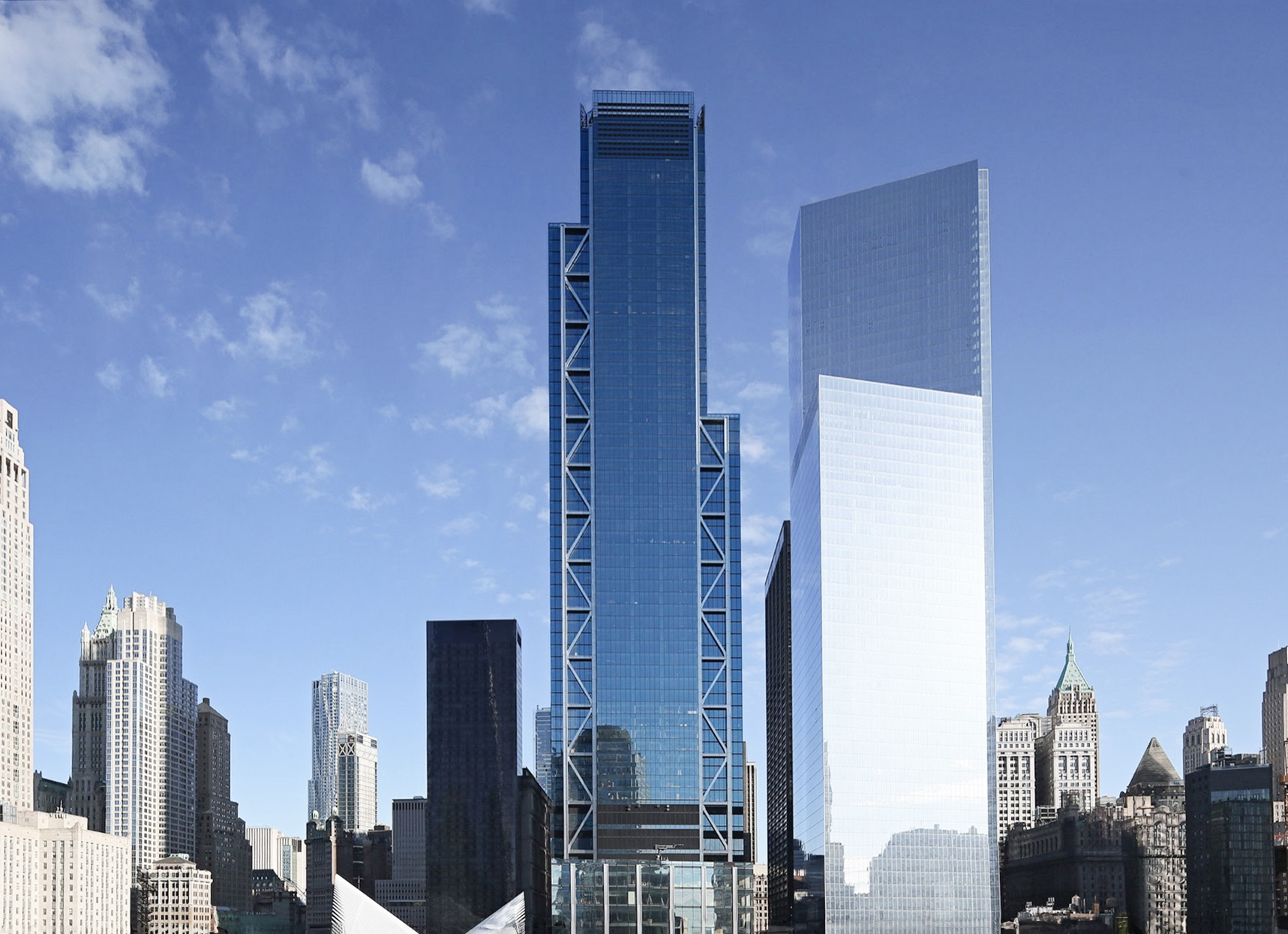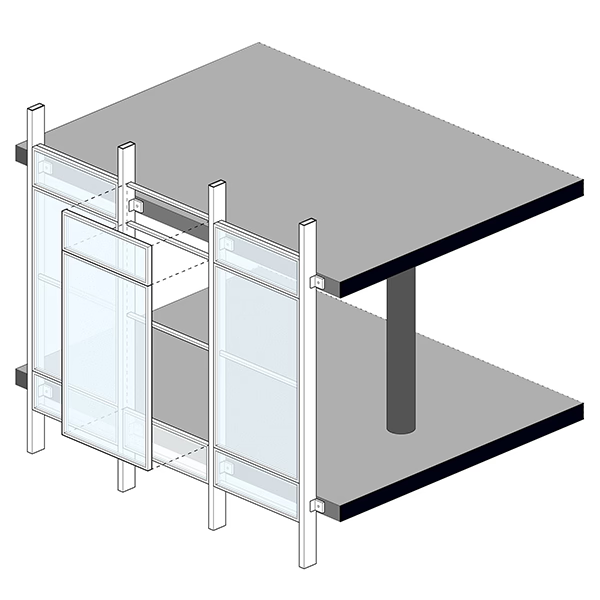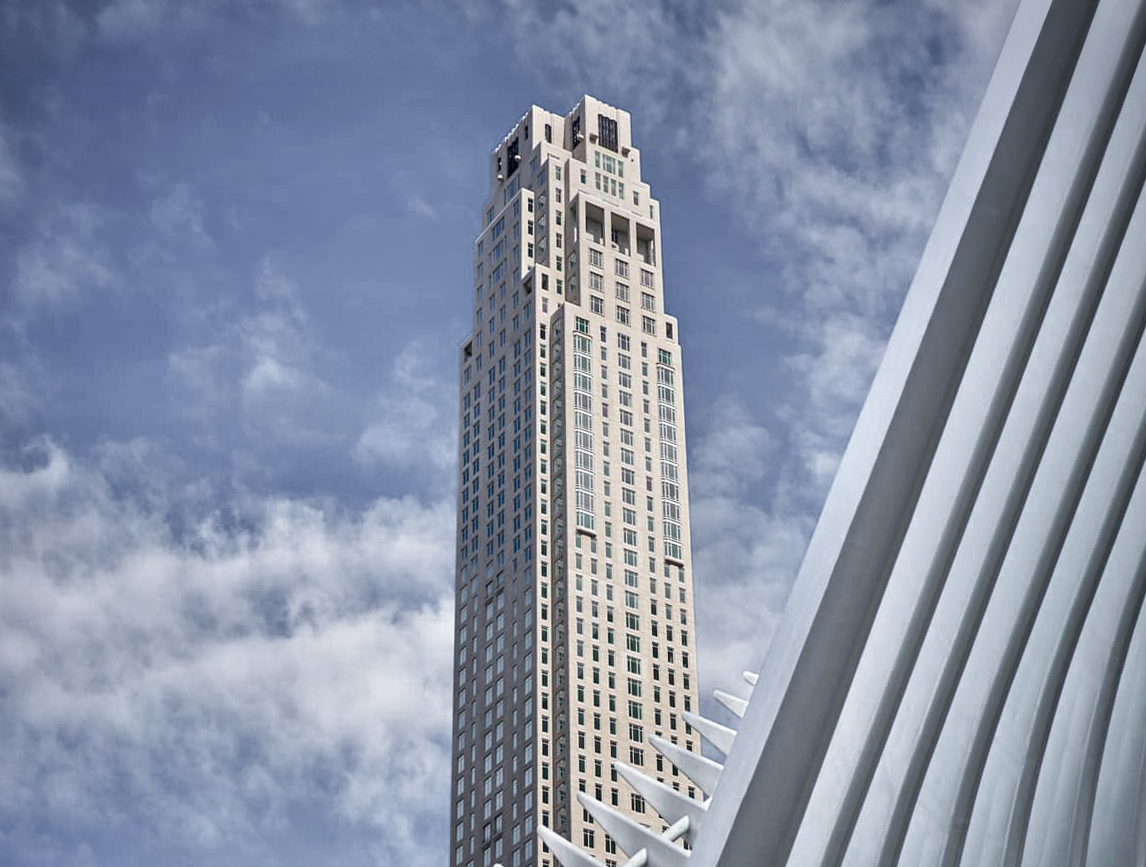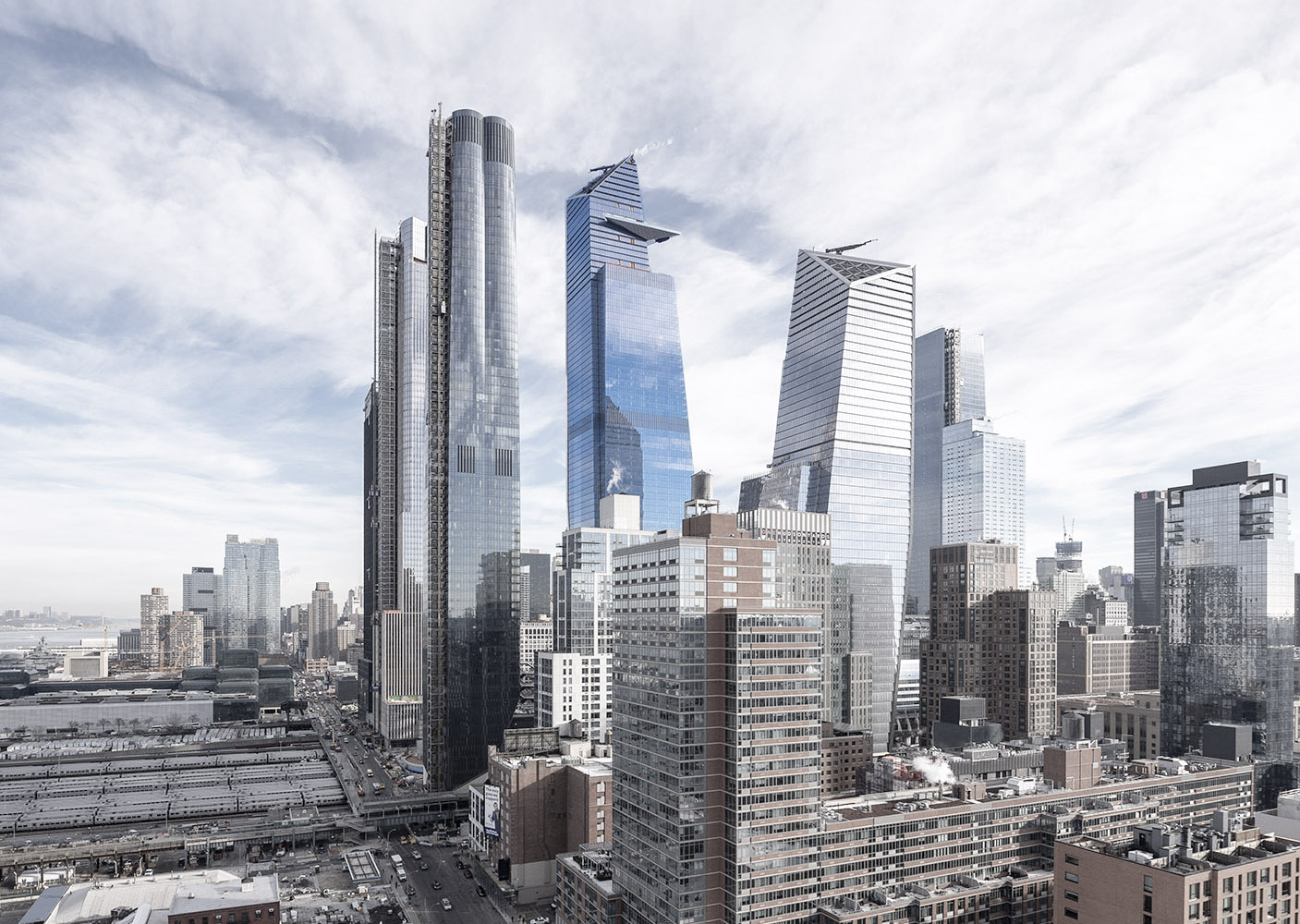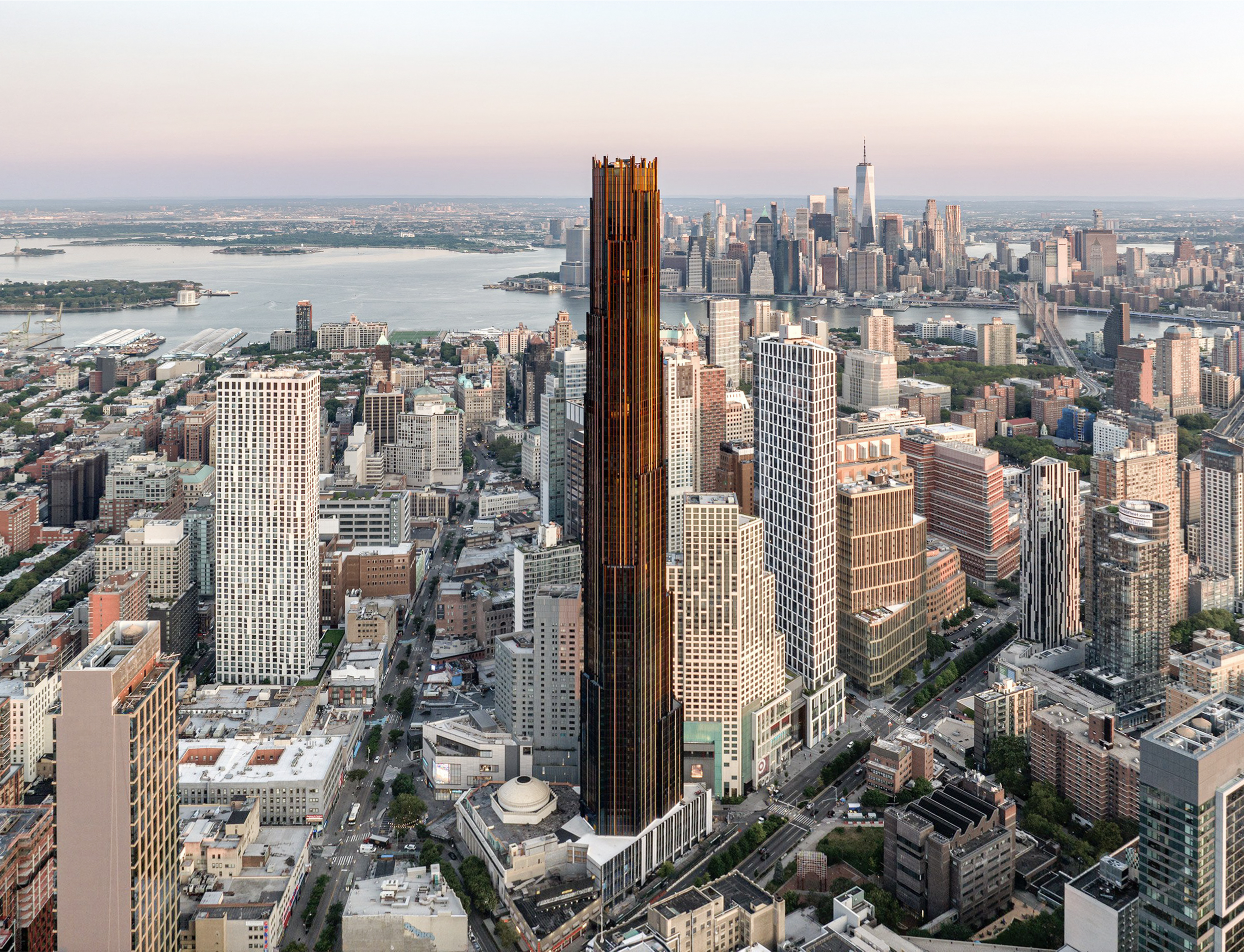The 3 World Trade Center is a Contemporary skyscraper designed between 2006 and 2006 by Rogers Stirk Harbour + Partners, with Richard Rogers as lead architect, in association with Adamson Associates Architects, and built between 2010 and 2018, for a reported $900 million dollars, in New York, NY.
3 World Trade Center is not the only name you might know this building by though. It is common for companies to want to attach their names to iconic buildings when they move in, or for the general public to come up with nicknames, and this one is no exception. The 3 World Trade Center is also known, or has been known as, 3 WTC, or 175 Greenwich Street.
Its precise street address is 175 Greenwich Street, New York, NY. You can also find it on the map here.
In 2019 the 3 World Trade Center was awarded with the The American Architecture Award.
The office building features five floors dedicated to retail stores, two of which are underground, and connections to subways and trains at the World Trade Center Transportation Hub.
The lower basement levels house loading docks for trucks, and parking for port buses, and cars, with the lowest is primarily designated for mechanical and support functions.
